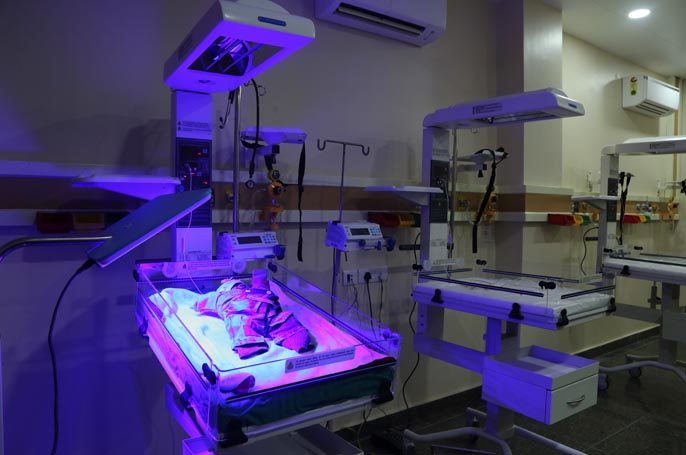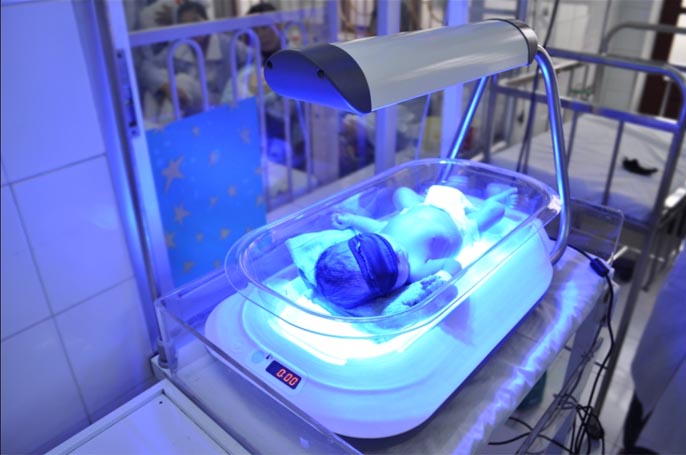Phototherapy For Jaundice

Newborn jaundice or Neonatal Jaundice is a common and usually harmless condition in newborn babies that causes yellowing of the skin and the whites of the eyes.
Jaundice in a newborn baby is common and occurs in approximately 60 per cent of newborn babies (60 in every 100 babies). It is noticed as a yellow colouring of the skin and the whites of the eyes and usually begins to fade by the end of the first week after birth without any problems. Jaundice can occur in babies of any race or colour, though it can be harder to see in babies with darker skin.
Jaundice can occur in all newborns; however, babies who may be more at risk of jaundice include:
- Premature babies
- Babies with an infection
- Babies with bruising.
If your baby has normal (physiological) jaundice, they don't need any special treatment.
If your baby's bilirubin level is high, the most commonly used treatment is phototherapy (bright light therapy). It does not contain rays that would harm your baby. Phototherapy is very safe and effective and available in hospital.
Phototherapy is performed with a special type of light and not ultraviolet light. In phototherapy, shining fluorescent lights from the bili-light lamps are used on the bare skin of newborns. A specific wavelength of this light used in this therapy can break down the bilirubin into a form that the body can get rid of through urine and stool.
It looks blue, and it may emit light in the blue-green spectrum with wavelengths of 430-490 nm. This therapy is given with a lamp known as a bili-light or with a bili-blanket.
There are two main types of photo therapies given to newborns:
- Conventional phototherapy : In this phototherapy, your baby will be kept under a halogen or compact fluorescent lamp (CFL).
- Fiberoptic phototherapy : In this phototherapy, the baby is kept on a blanket that incorporates fiberoptic cables; light travels through the fiberoptic cables and shines on to your baby’s back.
In both the methods of phototherapy, your baby’s skin is exposed to the light.
The treatment works best when as much skin as possible is exposed to the light. Hospital staff will:
- Undress your baby
- Put your baby in an incubator to keep warm during the treatment
- Cover your baby's eyes to shut out the bright light


